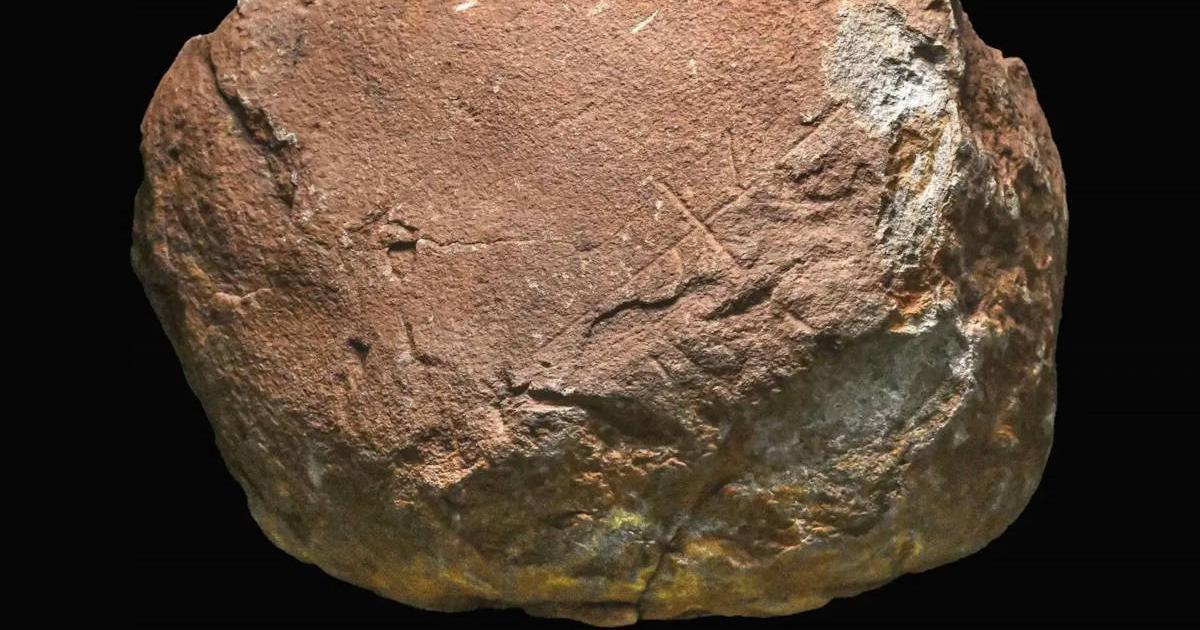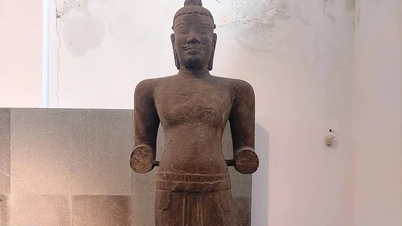(NLDO) - The carving in the Spanish city of Marbella has been identified as the world's oldest work of rock art ever created by humans.
Archaeologists have unearthed a stone with clear traces of an ancient artwork at the Coto Correa site in Marbella. Initial estimates suggest the engraving is 200,000 years old.

The rock holds the world's oldest rock art - Photo: MARBELLA CITY COUNCIL
According to Ancient Origins, if the dating estimate is confirmed, this could be one of the most important archaeological discoveries in Spain, requiring a rewriting of part of human evolutionary history.
The newly discovered artifact is a block of stone made of gabbro, a volcanic rock. A series of linear, deliberately carved lines arranged at different angles appear on the flattest surface of the stone.
Unlike the prehistoric cave paintings of the later Late Paleolithic period, these engravings are entirely geometric in nature.
They do not depict animals, people, or recognizable objects, at least not as far as people can tell. This also raises questions about their purpose and meaning.
It is likely that these marks were an early form of record keeping, perhaps tracking events, quantities of objects, or notable achievements.
Additionally, it is hypothesized that they served as a form of property identification, designating ownership of the stone itself.
On the other hand, these carvings could have had symbolic or ritual significance, which would have multiplied its value since ritual was another major step in the development of human society.
Whatever their specific significance, their age alone is shocking. Prior to that, the oldest known rock art dates back around 100,000 years, and it wasn’t until another 50,000 years later that they really began to become widespread.
This discovery not only extends the timeline of human art during the Paleolithic period, but also provides further evidence of human presence in the area around Marbella during this period.
Previously, several tools of similar age were found.
They were almost certainly not our species, but some extinct ancient human species. Homo sapiens, although it emerged around 300,000 years ago, is thought to have only left Africa around 60,000-70,000 years ago.
Source: https://nld.com.vn/soc-voi-tac-pham-nghe-thuat-200000-tuoi-cua-loai-nguoi-khac-196250320161112537.htm


![[Photo] Prime Minister Pham Minh Chinh chaired a meeting to discuss solutions to overcome the consequences of floods in the central provinces.](https://vphoto.vietnam.vn/thumb/1200x675/vietnam/resource/IMAGE/2025/10/29/1761716305524_dsc-7735-jpg.webp)
![[Photo] National Assembly Chairman Tran Thanh Man received a delegation of the Social Democratic Party of Germany](https://vphoto.vietnam.vn/thumb/1200x675/vietnam/resource/IMAGE/2025/10/28/1761652150406_ndo_br_cover-3345-jpg.webp)



![[Photo] Flooding on the right side of the gate, entrance to Hue Citadel](https://vphoto.vietnam.vn/thumb/1200x675/vietnam/resource/IMAGE/2025/10/28/1761660788143_ndo_br_gen-h-z7165069467254-74c71c36d0cb396744b678cec80552f0-2-jpg.webp)































![[Photo] Draft documents of the 14th Party Congress reach people at the Commune Cultural Post Offices](https://vphoto.vietnam.vn/thumb/1200x675/vietnam/resource/IMAGE/2025/10/28/1761642182616_du-thao-tai-tinh-hung-yen-4070-5235-jpg.webp)










































































Comment (0)